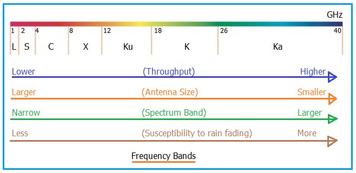
L Band Satellite Modem Design and Block Diagram
Explore the design of an L Band Satellite modem, with a satcom modem block diagram, modulation, demodulation, and VSAT integration.
Showing 20 posts (Page 2 of 4)
Advertisement

Explore the design of an L Band Satellite modem, with a satcom modem block diagram, modulation, demodulation, and VSAT integration.

Explore the pros and cons of Low Earth Orbit (LEO) for satellite applications, including signal strength, latency, coverage, and atmospheric effects.

Explore MCPC (Multiple Channels Per Carrier) in satellite and VSAT: advantages, disadvantages, and its role in efficient bandwidth sharing.

Explore the characteristics, advantages, and disadvantages of Medium Earth Orbit (MEO) satellites, including orbit period, height, lifespan, and coverage requirements.
Explore non-terrestrial networks (NTNs) which use space or aerial platforms to provide connectivity in remote areas and offer resilient communication solutions.
NTN (Non-Terrestrial Network) satellites integrate seamlessly with terrestrial mobile networks, facilitating global connectivity, especially in underserved areas, as specified in 3GPP Release 17.

Explore the differences between Orthomode Transducers (OMT) and Transmit Reject Filters (TRF) in satellite communication, focusing on their function, ports, and frequency handling.

Explore the advantages and disadvantages of orthomode transducers (OMTs), including benefits like polarization duplexing and drawbacks like cost considerations.
A comparison of PAMA, DAMA, and RMA techniques in satellite communication, highlighting their definitions, resource usage, advantages, and disadvantages.

Explore RF Low Noise Amplifiers (LNAs) in satellite communication: applications, advantages, manufacturers. Essential for amplifying weak signals, enhancing performance.

Explore the S band frequency range (2-4 GHz), its applications in radar and satellite communication, and its advantages and disadvantages.

Prepare for your Satcom job interview with expert questions and answers covering satellite transponders, frequency bands, orbits, and more.
Explore various satellite antenna types, including parabolic, horn, phased array, and helical antennas. Learn their advantages, disadvantages, and typical applications.

Calculate satellite bandwidth using the VSAT symbol rate formula. Estimate bandwidth needed for data transmission based on data rate, modulation, FEC, and roll-off factor.
Explore satellite capacity allocation methods: FDMA, TDMA, PAMA, and DAMA. Learn about their characteristics, advantages, and use cases.

Explore the advantages and disadvantages of satellite communication. Understand its role in global connectivity, from broad coverage to limitations like latency and cost.
Ace your RF engineer interview with these common questions about satellite communication, covering everything from geostationary satellites to emerging trends.

Explore satellite communication fundamentals, types (geosynchronous, geostationary), network architecture, frequency bands, orbits, and diverse applications.
An overview of satellite frequency bands, their uplink/downlink ranges, and applications including communication, broadcasting, and radar.

Explore the essential role of satellite transponders in relaying signals. Learn about transponder functions, components, and their operation in communication satellites.
Advertisement